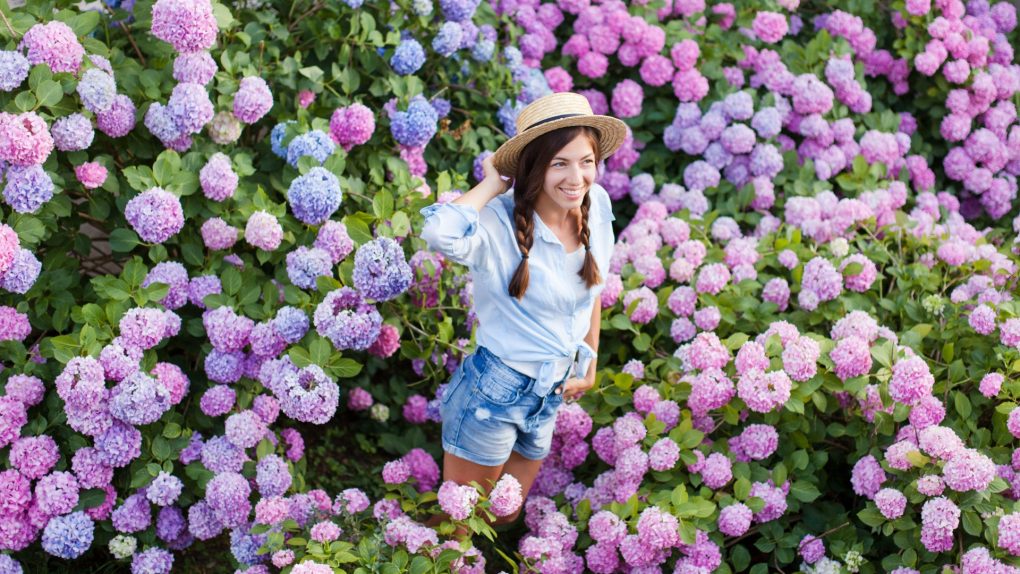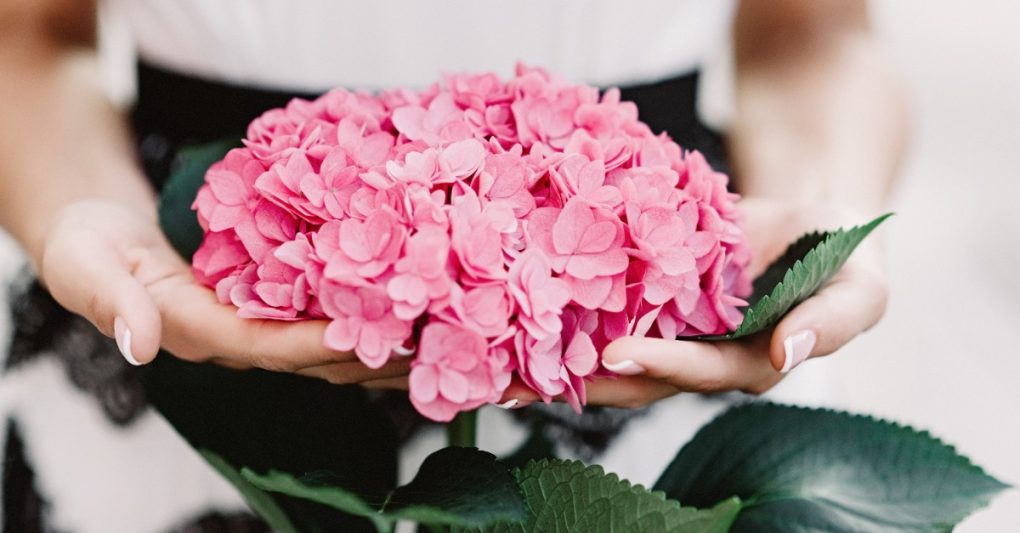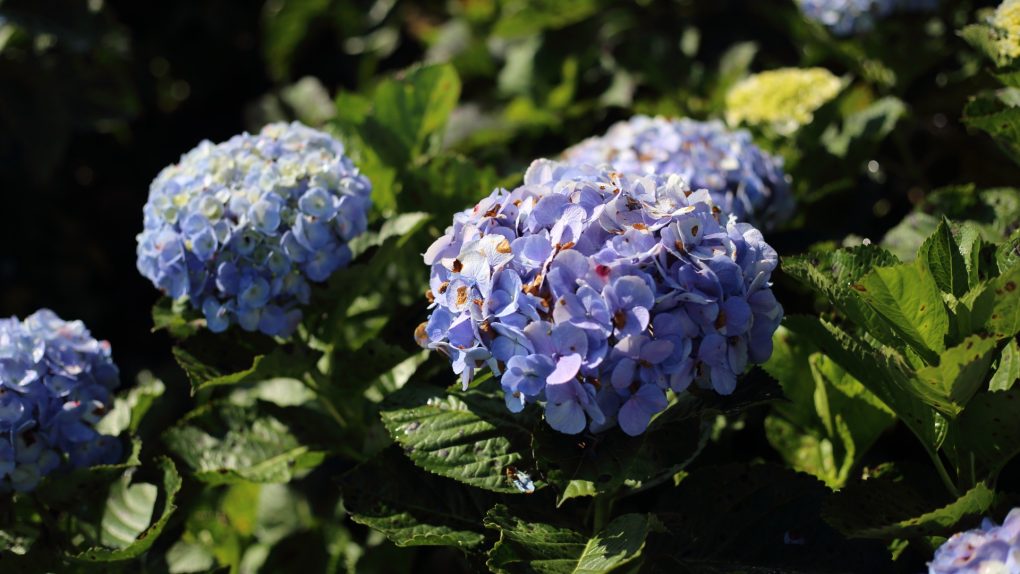What Gives Hydrangeas Their Color: A Scientific Explanation
Hydrangeas owe their vibrant colors to the presence of pigmented compounds called anthocyanins. These natural colorants are sensitive to the pH levels in the soil.

When the soil is acidic (pH less than 6), the anthocyanins make the hydrangea blooms take on a blue hue. Conversely, when the soil is more alkaline (pH greater than 6), the blossoms exhibit shades of pink or red. However, white hydrangea varieties remain unaffected by soil pH levels as they lack anthocyanins.
In addition to soil pH, factors such as sunlight exposure, climate, and soil nutrients can influence the plant’s color intensity. For example, hydrangeas in direct sunlight will have more vibrant colors, while those in partially shaded areas often display paler hues.
Table of Contents
The Science Behind Hydrangea Color
Hydrangeas are known for their stunning blooms and variety of colors, including blue, pink, purple, white, and green. But what gives these flowers their distinct hues?
Acidic Soil and Blue Hydrangeas
The soil’s acidity is one of the main factors that determines hydrangea color. When the soil is acidic, with a pH below 7, hydrangeas produce blue blooms. This is because the acidic soil allows the plant to absorb aluminum ions, which then react with other compounds in the flower to create a blue pigment.
It’s important to note that the availability of aluminum ions in the soil is also affected by other factors, such as the presence of other minerals and the amount of organic matter in the soil. Additionally, not all hydrangea species can produce blue blooms, so choosing the right variety is important if you want to achieve this color.
Alkaline Soil and Pink Hydrangeas
On the other hand, when the soil is alkaline, with a pH level above 7, hydrangeas tend to produce pink blooms. This is because the alkaline soil makes it more difficult for the plant to absorb aluminum ions, which then causes the flower to produce a different pigment. In this case, the pink color comes from anthocyanin, which is naturally present in the plant.

Again, it’s important to note that other factors can also affect the availability of aluminum ions in the soil, so it’s only sometimes guaranteed that alkaline soil will produce pink blooms. It’s also worth noting that some hydrangea species can produce blue and pink blooms, depending on the soil conditions and other factors.
White Hydrangeas and Lack of Pigment
Finally, some hydrangea varieties produce white blooms, which are the result of a lack of pigment. In these cases, the flowers do not contain any anthocyanin or other pigments, and instead rely on the natural color of the plant’s tissue to create a white appearance. These white hydrangeas can be particularly striking when planted alongside other colorful varieties, as they provide a neutral backdrop that allows the other colors to stand out.
Overall, the color of hydrangeas is a complex and fascinating topic, influenced by various factors including soil acidity, mineral content, and genetic variation. By understanding these factors, gardeners can choose the right varieties and create the perfect conditions to achieve the desired colors in their hydrangea blooms.
Factors That Affect Hydrangea Color
Hydrangeas are known for their beautiful, vibrant colors, but what gives them their hues? The color of a hydrangea’s flowers can be influenced by various factors, including the variety of hydrangea, the amount of sunlight it receives, watering and fertilization, and climate and temperature.
Variety of Hydrangea
There are several types of hydrangeas, each with unique characteristics. Some varieties, such as the Bigleaf hydrangea (Hydrangea macrophylla), are known for changing color based on soil pH. Other varieties, such as the Oakleaf hydrangea (Hydrangea quercifolia), have white flowers but gradually turn pink as they age.
Amount of Sunlight
The amount of sunlight a hydrangea receives can also affect its color. For example, hydrangeas exposed to more direct sunlight tend to have brighter, more intense colors, while those grown in shade may have softer, more pastel hues.
Watering and Fertilization
Proper watering and fertilization can also play a role in hydrangea color. Hydrangeas that are well-hydrated and well-fed tend to have larger, more vibrant flowers. However, over-fertilizing can cause the plant to produce too much foliage at the expense of flower production.
Climate and Temperature
Finally, climate and temperature can also affect hydrangea color. Cooler temperatures can cause flowers to have a bluer hue, while warmer temperatures can lead to pinker flowers. Additionally, extreme heat or cold can cause flowers to wilt or discolor.

How to Change Hydrangea Color
Hydrangeas are a beautiful addition to any garden, but sometimes their color may not match the desired aesthetic. Fortunately, it is possible to change the color of hydrangeas by altering the pH of the soil. Here are some tips for changing the color of hydrangeas:
Changing Blue Hydrangeas to Pink
If you have blue hydrangeas that you want to turn pink, you will need to increase the pH of the soil. Here are some methods:
● Add garden lime to the soil to raise the pH
● Add wood ash to the soil
● Add crushed eggshells to the soil
It is important to note that these methods may take some time to show results and must be repeated periodically.
Changing Pink Hydrangeas to Blue
If you have pink hydrangeas that you want to turn blue, you will need to decrease the pH of the soil. Here are some methods:
● Add aluminum sulfate to the soil to lower the pH
● Add sulfur to the soil
● Add coffee grounds to the soil
Again, it is important to note that these methods may take some time to show results and must be repeated periodically.
Changing White Hydrangeas to Blue or Pink
If you have white hydrangeas, you can change their color to blue or pink by following the same methods as above. Remember that white hydrangeas may not respond as strongly to soil pH changes as blue or pink hydrangeas.
It is important to note that changing the color of hydrangeas can be a delicate process and may not always be successful. Therefore, it is best to consult with a gardening expert before attempting to change the color of your hydrangeas.
